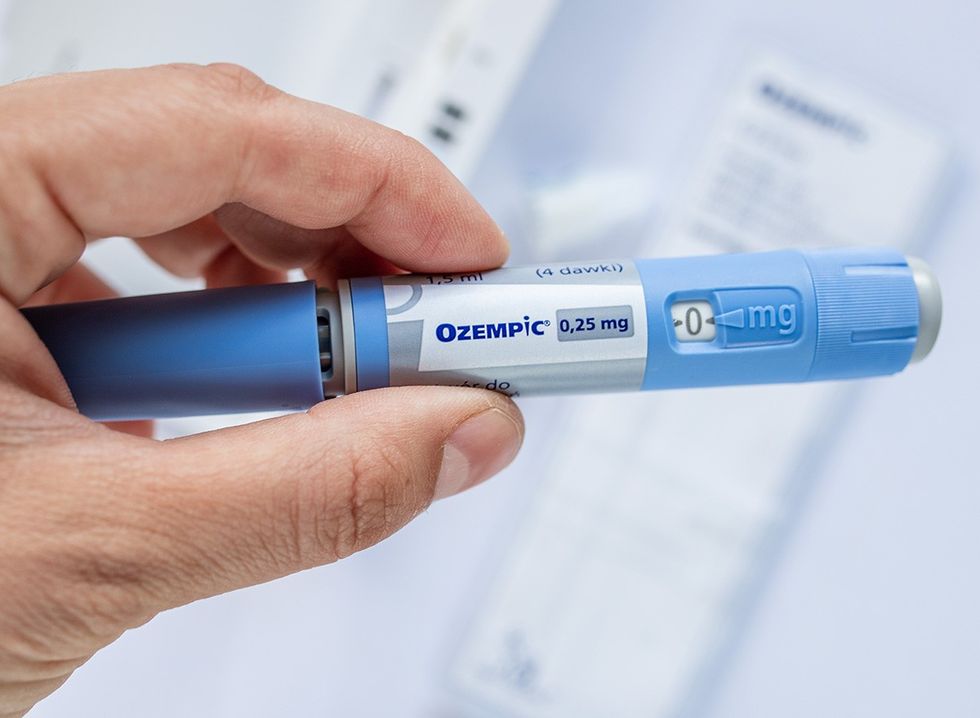We all know we should move more, but finding time for exercise can be challenging. What if a simple daily walk could make a significant difference? Paul Revelia, a renowned fitness coach specializing in physique transformation, decided to put this theory to the test. With years of experience and a science-based approach, Revelia has helped countless clients achieve their fitness goals. Now, he turned the spotlight on himself to demonstrate the power of consistent, low-intensity exercise.
The 30-Day Walking Challenge
Revelia embarked on a 30-day challenge to walk for one hour every day. "I wanted to show you guys that walking every day for one hour is going to change my physique," he explained in his post. Starting at 230 pounds, Revelia aimed to target stubborn lower back and belly fat without making any other significant changes to his routine. "This is me, six foot 3, 47 years old, 225 pounds. What I'm hoping to do is lose some of this, right? This is the lower back fat, some of the lower belly fat," Revelia shared at the start of his journey.
The Science Behind Walking for Weight Loss
Exercise physiologist Katie Lawton, MEd, from Cleveland Clinic, supports the idea that walking can indeed help with weight loss. "A dedicated walking program can help improve your overall health and fitness while moving you toward a healthier number on the scale," Lawton explains. Walking is an accessible form of exercise that can easily be incorporated into daily routines, making it an excellent choice for those looking to lose weight.
How Much Walking is Enough?
While Revelia chose to walk for an hour each day, the amount of walking needed to lose weight can vary. Lawton suggests focusing on minutes rather than steps, stating, "Not all steps are created equal." She recommends at least 150 minutes of moderate aerobic activity per week for heart health, but for weight loss, the goal increases to 200-300 minutes per week. This aligns well with Revelia's approach of 60 minutes daily, totaling 420 minutes per week.
Maintaining Normal Routines
Throughout the challenge, Revelia maintained his usual habits. "I'm not changing my workouts," he stated, emphasizing that the only addition was the daily walk. He continued his regular weight training routine, typically five days a week, focusing on exercises like chest, shoulders, and triceps. "The big difference with this body change is that I'm just adding walking. That's it. I'm not changing my diet, I'm not tracking my calories," Revelia clarified.
RELATED: I'm a Nutritionist and Here are 5 Reasons Why I Prescribe 30-Minute Walks for Weight Loss
The Importance of Diet
Revelia didn't make drastic changes to his diet during the challenge. "I'm not tracking my calories," he said. However, he did mention making mindful choices, such as opting for protein-rich meals at Chipotle when eating out. He explained, "When I go out to eat, I make decisions that I think are going to be helpful towards my goal."
This approach aligns with Lawton's advice. She emphasizes that while walking can contribute to weight loss, it's most effective when combined with a healthy diet. "You can't out-exercise a bad diet," Lawton points out. This underscores the importance of Revelia's mindful eating habits during his challenge.
Early Morning Cardio
To fit the walks into his busy schedule, Revelia often started early. "I've been getting up a little earlier... starting my cardio sessions at five, getting done by six," he shared. He used a treadmill, setting it at an incline to increase the intensity. "When you go from not doing much to 60 minutes on an incline treadmill, you're going to be amazed at how hard that is," Revelia admitted.
The Walking Routine
This dedication aligns with Lawton's advice on starting a walking program. She emphasizes the importance of making it part of your routine: "You need to make it part of your routine. This is about adjusting your lifestyle for your health." Lawton also encourages persistence, stating, "If you miss a day or two, that's fine. Just get back on that horse. Walking to manage your weight or improve your health isn't a one-day thing. It's a long-term commitment."
RELATED: I Lost 30 Pounds in 6 Months Just by Walking: Here's How
Progress and Challenges
As the days progressed, Revelia noticed subtle changes. "Slightly, slightly. Not a whole lot of adjustment on the scale," he reported at the six-day mark. The challenge wasn't always easy, especially with travel and adapting to the new routine. "Those cardio sessions were tough at the beginning," Revelia admitted. He emphasized the importance of consistency: "Motion creates change."
Surprising Results
By day 17, Revelia had lost 8.8 pounds without tracking calories or making other significant changes. "Down started at 229.6. Today, I was 220.9. So 8.7 pounds, 8.8 pounds, something like that. So not bad for 18 days, not tracking calories, still having alcohol, but being a little bit more specific each day," he reported. At the end of the 30 days, the results were even more impressive. "I incorrectly said I expected my weight to be 225. When we started it was 230, which I'll show you here when I stepped on the scale, woke up on the scale today, 218," Revelia revealed.
Have Realistic Expectations
These results align with Lawton's expectations for a dedicated walking program. However, she advises having realistic expectations, noting that while walking can improve overall fitness, "it's not going to give you six-pack ab muscles and a shredded physique."
RELATED: I'm a Personal Trainer and These 5 Moves Banished My Clients' Bat Wings in Weeks
Visual Changes and Body Composition
The physical changes were noticeable, particularly in Revelia's problem areas. "I think I'm a little bit tighter in the core. I had a little bit of extra sauce right here," he noted, pointing to his midsection. He also observed changes in his back, an area where he tends to lose fat first. "For me, this area really tends to lean out first and as I lose the next bit of weight because I'm going to take part in our transformation challenge, try to lose another 10 to 12 pounds, and this is going to start to clear up a little bit for me," Revelia explained.
Beyond Weight Loss: Other Benefits of Walking
While Revelia's challenge focused primarily on physical changes, it's worth noting the broader benefits of regular walking. As Lawton explains, "The more you're moving, the more you benefit." Regular walking can improve cardiovascular health, reduce the risk of chronic diseases, boost mood and energy levels, and enhance overall well-being. These additional benefits make walking an excellent form of exercise, even for those not specifically aiming for weight loss.
RELATED: I Help Women Over 35 Lose Weight: 9 Eating Errors You Must Stop Today
Key Takeaways
Revelia's experiment demonstrated that consistent, low-intensity exercise can lead to significant changes, even without strict dieting. "This is literally the difference between our starting video and here... somewhere in that 10 to 12 pounds of fat loss," he summarized. The challenge showed that simple lifestyle changes, like adding a daily walk, can have powerful effects on body composition and overall fitness.
Revelia emphasized, "I don't believe I lost any muscle. So how is it possible to lose that much weight just by moving more? I'm pretty sedentary throughout the day." His experience underscores the potential of incorporating daily walks into one's routine for noticeable physical changes. And if you enjoyed this article, don't miss 12-3-30 Walking Method: 20 Proven Tips to Lose Weight Faster.






















 Shutterstock
Shutterstock Shutterstock
Shutterstock Shutterstock
Shutterstock Shutterstock
Shutterstock alexx.fitt/TikTok
alexx.fitt/TikTok Shutterstock
Shutterstock Shutterstock
Shutterstock


 I'm a Nutritionist and These 9 High-Protein Snacks Keep My Clients Full While Losing 50 Pounds
I'm a Nutritionist and These 9 High-Protein Snacks Keep My Clients Full While Losing 50 Pounds
 Shutterstock
Shutterstock 2. Processed FoodsShutterstock
2. Processed FoodsShutterstock Shutterstock
Shutterstock Shutterstock/Prostock-studio
Shutterstock/Prostock-studio Shutterstock
Shutterstock Pro TipsShutterstock
Pro TipsShutterstock Shutterstock
Shutterstock Shutterstock
Shutterstock Shutterstock
Shutterstock Shutterstock
Shutterstock Don’t Drink as Much AlcoholShutterstock
Don’t Drink as Much AlcoholShutterstock Most Women on GLP-1s Are Making a Few Common MistakesShutterstock
Most Women on GLP-1s Are Making a Few Common MistakesShutterstock Soda and Sugary DrinksShutterstock
Soda and Sugary DrinksShutterstock Shutterstock
Shutterstock Eat BreakfastShutterstock
Eat BreakfastShutterstock And Improve Insulin SensitivityShutterstock
And Improve Insulin SensitivityShutterstock Belly Flab Strip Tip: Sugar and Fat Calories Leave Its Mark on Your BodyShutterstock
Belly Flab Strip Tip: Sugar and Fat Calories Leave Its Mark on Your BodyShutterstock Shutterstock
Shutterstock The Drugs Mimic the GLP-1 Hormone Naturally Produced by the BodyShutterstock
The Drugs Mimic the GLP-1 Hormone Naturally Produced by the BodyShutterstock 3. Deep-Fried ItemsShutterstock
3. Deep-Fried ItemsShutterstock